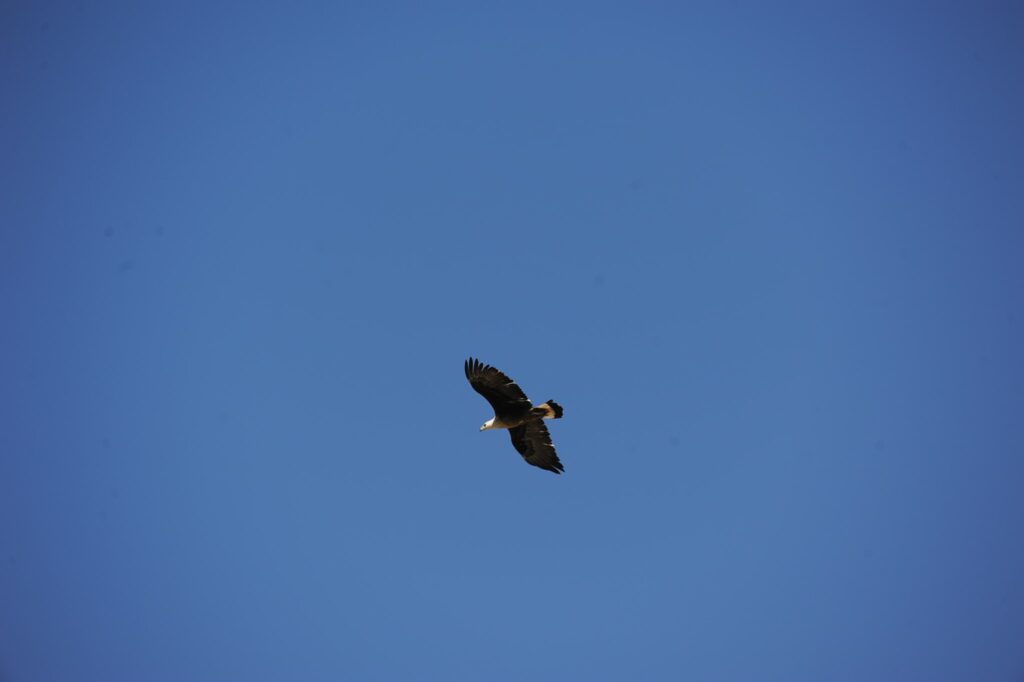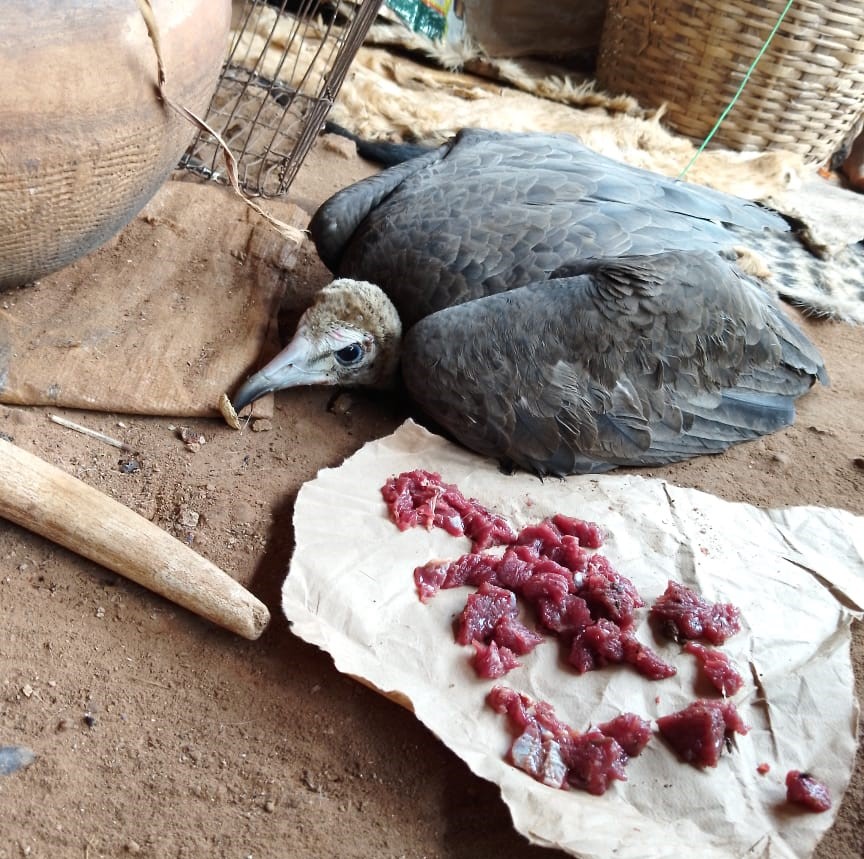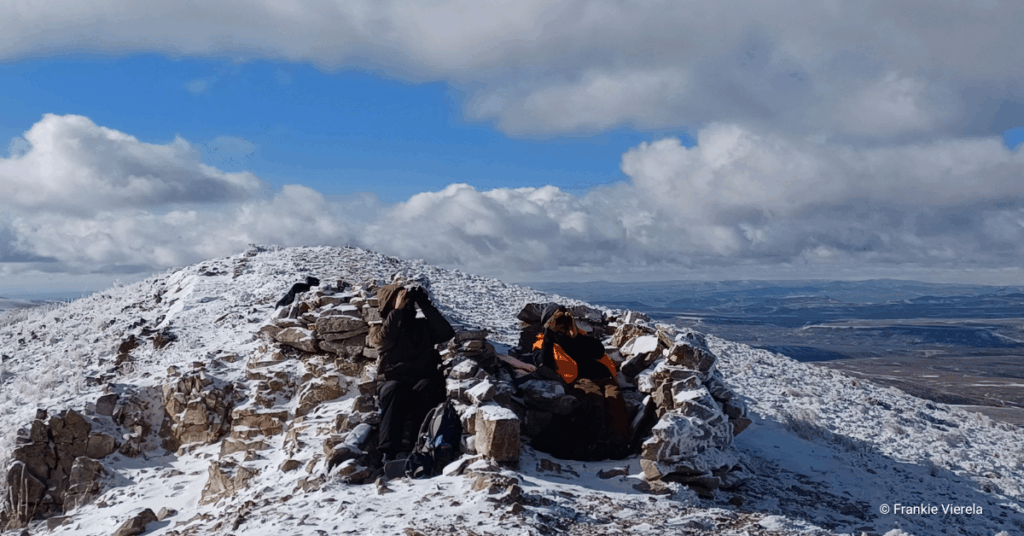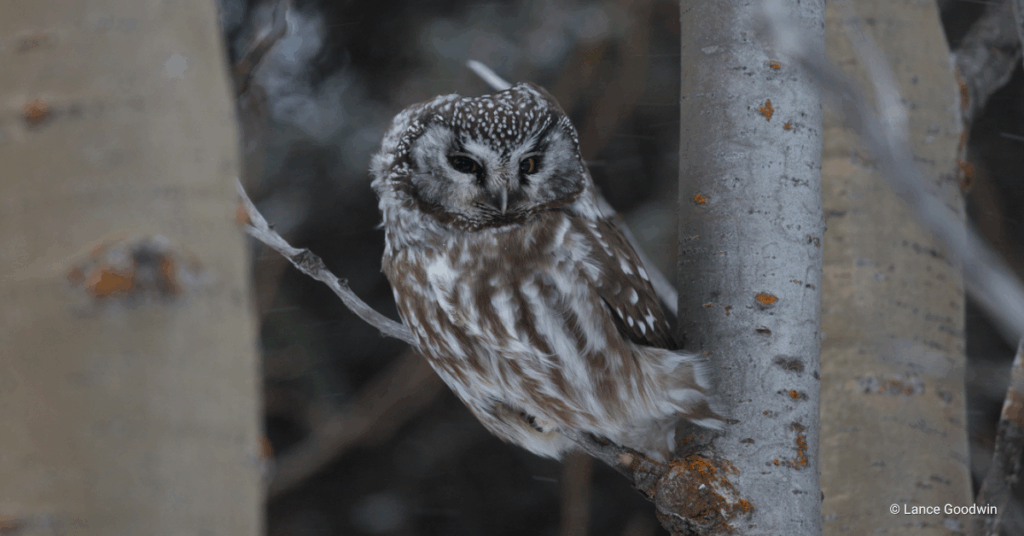With support from sponsor Kaddas Enterprises, recipients of the 2023 Global Raptor Research & Conservation Grant have spent the last six months working to conserve critical raptor species around the world. From conducting fieldwork to developing outreach materials, each team has made significant progress on their projects focusing on vulnerable and endangered species.
Lungten, Palla’s Fish Eagle, Bhutan
After selecting three sites in Bhutan with past sightings of the Endangered Palla’s Fish Eagle (Haliaeetus leucoryphus), Lungten and his team have completed surveys at two sites—the upper and lower Punatsangchhu basin. Conducted April-June 2023, the team recorded the presence of the species in both sites; however, Lungten reports that the sites were “greatly under anthropogenic pressure” from activities like fishing and rafting as well as commercial activities like sand mining and logging, all of which lead to degradation and loss of suitable habitat for the Palla’s Fish Eagle. The only setback the team encountered was not being able to survey some areas within the prioritized zone due to rugged terrain.

Bryan Eberth Zambrano Gomez, Rufous-tailed Hawk, Chile
Bryan Eberth Zambrano Gomez and his team of volunteers have detected their focus species, the Vulnerable Rufous-tailed Hawk (Buteo ventralis) at one of four sites recently surveyed in Chile. Flying at high altitude in a thermal with Black vultures (Coragyps atratus), it was displaced from its territory by chimangos (Daptrius chimango), who initiated a chase. In addition to their fieldwork, Bryan and his team have made significant progress on the construction of their conservation center, which will focus on captive breeding of the Vulnerable Rufous-tailed Hawk for later reintroduction.

Arjun Kannan, Pied Harrier, India
While awaiting permits to conduct fieldwork on the Pied Harrier (Circus melanoleucos)—Arjun Kannan has developed outreach material to distribute at his field site. This includes a bookmark featuring the Pied Harrier, illustrated by Ms. Ujali Shirodkar. Later this month, they’ll be releasing a detailed field guide, including identification characteristics and information about the ecology of each of the six harrier species in India. With permits now secured, Arjun and his team plan to visit Manas National Park—an area thought to be the breeding region of the species—in mid-November to document the winter distribution of the species and map roosting sites.

Abiola Sylvestre Chaffra, Hooded Vulture, Benin
Abiola Sylvestre Chaffra has documented his focus species, the Critically Endangered Hooded Vulture (Necrosyrtes monachus), alive and dead in fetish markets throughout southern Benin. Although the sellers lack trust in the research team, as they are selling a species protected by law, the team has successfully conducted 115 surveys across eight markets. The goal is to document where the birds are coming from, what parts are being used, and why customers are buying them. In addition to conducting surveys at the market, the team has been spreading awareness about how important the Hooded Vulture is to the local environment.

We’re thrilled with the work our four 2023 Global Raptor Research & Conservation Grant have accomplished so far and are looking forward to seeing all they achieve in the months to come. Stay tuned for final updates from the 2022 awardees, and don’t forget that we’re currently accepting applications for our 2024 funding opportunity!
This blog was written by Kirsten Elliott, our Development & Communications Director, after synthesizing the reports provided by our grantees. You can learn more about Kirsten here and our 2023 grantees here.



